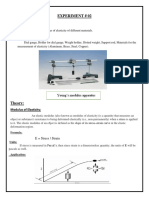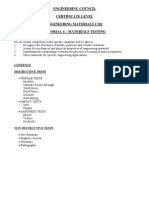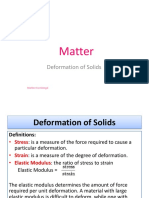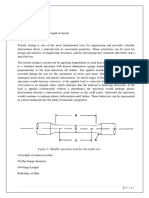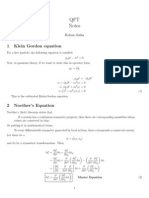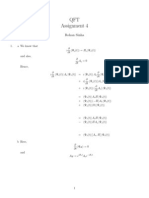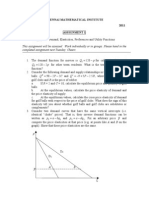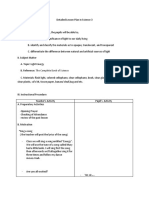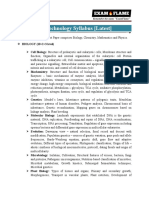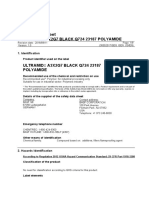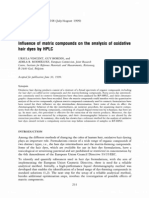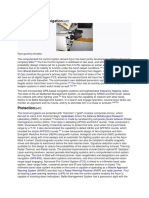0% found this document useful (0 votes)
1K views18 pagesModulus of Elasticity
The document discusses modulus of elasticity, also known as Young's modulus, which describes the tendency of an object to deform elastically when a force is applied. It defines modulus of elasticity using an equation relating stress, strain, and the elastic modulus. The document then describes how an experiment was conducted to measure the modulus of elasticity for different materials using a metal strip, weights, and dial gauge to measure extension. Issues with hysteresis in the dial gauge readings are also discussed.
Uploaded by
iamrohanCopyright
© Attribution Non-Commercial (BY-NC)
We take content rights seriously. If you suspect this is your content, claim it here.
Available Formats
Download as PDF, TXT or read online on Scribd
0% found this document useful (0 votes)
1K views18 pagesModulus of Elasticity
The document discusses modulus of elasticity, also known as Young's modulus, which describes the tendency of an object to deform elastically when a force is applied. It defines modulus of elasticity using an equation relating stress, strain, and the elastic modulus. The document then describes how an experiment was conducted to measure the modulus of elasticity for different materials using a metal strip, weights, and dial gauge to measure extension. Issues with hysteresis in the dial gauge readings are also discussed.
Uploaded by
iamrohanCopyright
© Attribution Non-Commercial (BY-NC)
We take content rights seriously. If you suspect this is your content, claim it here.
Available Formats
Download as PDF, TXT or read online on Scribd
/ 18









